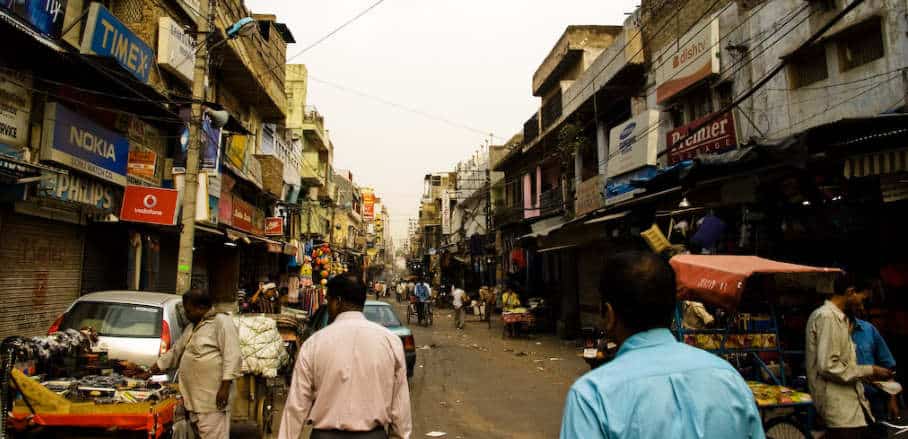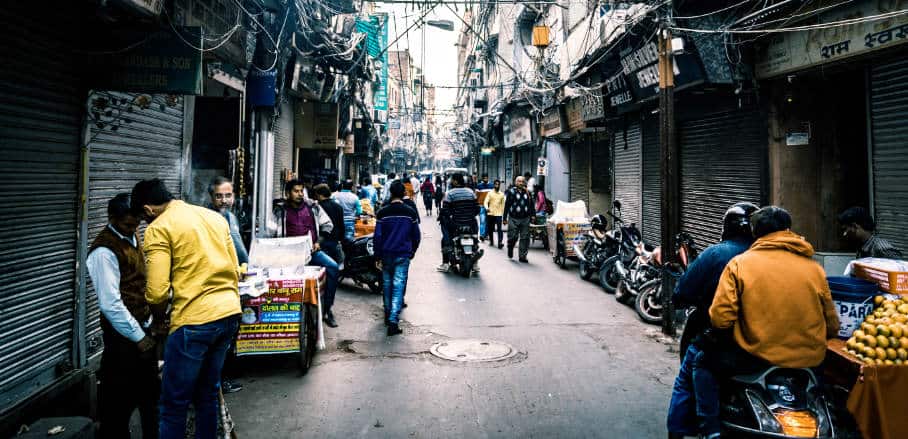The End of Housing Insecurity in New Delhi?
Urban Citizens in India are still struggling with housing inadequacy and (un)affordability. Piyush Tiwari and Jyoti Shukla call on public and private housing institutions to provide equal access to decent and affordable housing.
Currently, approximately 49 per cent of the Indian urban population is living in informal settlements, so-called slums. According to a forecast by the United Nations Department of Economic and Social Affairs (UNDESA), the number of people living in informality could add up to 3 trillion people globally by 2050. In addition, residents of informal settlements are particularly vulnerable to natural disasters as they often live in exposed locations. Hence, the consequences of climate change are exacerbating inequalities in cities even further.
Piyush Tiwari and Jyoti Shukla delve into this issue in the URBANET article “Affordable New Delhi: Developments, Challenges, and Opportunities.” Given our current focus on Informality and Social Protection, the article is worth revisiting:
Despite phenomenal economic growth and a major central government-led housing development and investment programme called Pradhan Mantri Awas Yojana (PMAY), cities in India are still struggling with housing inadequacy and (un)affordability. Unaffordability stems from high house prices, which make homeownership challenging, and the lack of rental housing available for a longer tenure, which makes renting inaccessible.
Housing inadequacy in megacities is manifested in various forms, such as informal settlements, homelessness, and overcrowding. According to the Economic Survey of Delhi 2021, 4.5 of Delhi’s 19 million people live in informal settlements and another 0.5 million dwell in urban villages, which lack access to formal civic services. Though not conforming to formal planning norms, these provide housing solutions for middle and lower-income urban households. Formal and adequate housing is affordable only to higher-income households.

Housing inadequacy in megacities is manifested in various forms, such as informal settlements, homelessness, and overcrowding. © Michael Hoy/Flickr
The lack of decent housing results from an ill-functioning housing market which does not deliver for the urban poor. When markets fail to provide affordable housing for rental and ownership, the role of government becomes critical. In Delhi, public rental housing is absent, making housing inaccessible for low-income households, who constitute a critical mass of the city’s labour force.
How Has the Discourse on Informal Settlements in India Evolved?
Informal settlements have increasingly been included in the urban system. Additionally, a positive shift has been observed in the Indian judiciary’s recognition of informal housing as a part of people’s right to life. For instance, in the case of Olga Tellis vs Bombay Municipal Corporation (1985), the Supreme Court of India ruled that “the right to livelihood is an important facet of the right to life.” It stated that “the eviction of the (pavement dwellers) will lead to deprivation of their livelihood and consequently to the deprivation of life.” The Court further stated that the urban poor do not “claim the right to dwell on pavements or in slums to pursue any activity that is illegal, immoral, or contrary to the public interest. Many of them pursue occupations which are humble but honourable.”
In the case of Ahmedabad Municipal Corporation Appellant vs Nawab Khan, Gulab Khan and Others (1997), the court ruled that “Article 25(1) of the Universal Declaration of Human Rights declares that everyone has the right to a standard of living adequate for the health and well-being of himself and his family; it includes food, clothing, housing, medical care and necessary social services.”
Ananya Roy aptly argues that informality results from a state’s suspension of formal norms. The state determines when to enact this suspension to decide what is formal and what is not, and what aspects of informality will and will not sustain.
Neoliberal Ideologies Weaken Right to City
Nevertheless, Indian urbanists such as Gautam Bhan debate that the urban poor’s right to the city – which gave them legitimacy to being urban dwellers – has weakened over time. At the turn of the millennium, the shift towards neoliberal ideologies of self-governance and market participation has resulted in informal settlements being seen as an eyesore, a centre for all the undesirable that hinders the ambitions of a global city. Courts refused to hold the government responsible for their failure to provide low-income housing and weakened the right of the poor to resettlement.
Urban citizens living in informal urban settlements are viewed as unhygienic, economically unviable, environmentally harmful, and concentrated with unsocial activities, which have no place in global cities whose sole purpose is to attract capital and knowledge workers. Consequently, since 2004, courts in Delhi have ordered mass eviction of those living in informal settlements on floodplains of river Yamuna. One-third of these households were re-housed in resettlement colonies on urban fringes, far away from their employment locations.
What Are the Negative Consequences of Relocating Households?
The experience of relocating households in purpose-built resettlement colonies has not been satisfactory. Reasons for dissatisfaction in resettlement colonies include poor connectivity to employment locations, lack of adequate housing, lack of privacy due to the high density, ‘high rise’ typology of buildings, no access to infrastructure for people with disabilities, poor access to healthcare facilities, education, and inadequate basic services such as water, sanitation, streetlights, transport, and burial/cremation ground.
For instance, in Chennai, purpose-built resettlement colonies post-tsunami are gradually transforming into a ghetto of households of marginalised social classes such as scheduled caste (SC), scheduled tribe (ST) and most backward classes (MBC). Safety for women and children is a concern that has resulted in many women not going out to work, and many children having dropped out of school.
During the COVID-19 pandemic, Indian cities saw reverse migration of the urban poor from urban to rural centres. Lack of employment and shelter in urban areas extenuated problems of the urban poor and left them vulnerable. PMAY-Urban expanded to include the development of affordable rental housing complexes by public agencies or through public-private partnerships. Yet, these fixes were implemented without integration into the planning system, finance, and development market and thus are unlikely to result in new housing stock that will provide a solution for sheltering the urban poor.
Can “Built-to-Rent” Be a Solution to Make New Delhi More Affordable?
The question remains: what could be an effective mechanism for providing affordable rental housing? The current private rental market with housing supplied by individual landlords on short-term leases is marred with poor quality, lack of tenure security, and limited stock. In many parts of the world, build-to-rent (BTR) is an asset class considered for large-scale affordable rental housing. Owned by institutional investors, financed by long-term capital, and operated by professional property managers, these units provide long-term rental tenure for low- and medium-income households.
However, BTR requires a favourable planning regime and fiscal and financial structures to make these units affordable for tenants and attractive to investors. While proposed affordable rental housing complexes in India are a variant of BTR, the missing link is the institutional investors, such as insurance and pension funds. Last year, the Insurance Regulatory and Development Authority of India permitted insurance companies to invest in real estate investment trusts (REITs) and infrastructure investment trusts (InVITs), which could be vehicles for investment in BTR. To make rental housing affordable, a range of land value capture instruments can be used, such as higher density for BTR-related land assembly, special zoning, developer contribution, or transferable development rights.
The urban poor are an integral part of the urban system in India whose social and economic contributions are immense and need equal access to decent and affordable housing. A fully functioning housing market is necessary to address housing (un)affordability issues, particularly for the low-income segment. This, however, would require public and private sector levers to be used to enable the provisioning of a range of housing tenures. The city planning system also needs to be contextual and flexible to accommodate the physical, social, and economic requirements of urban dwellers.
The original version of this article has been published on Urbanet in July 2022. It has been altered for republishing.
